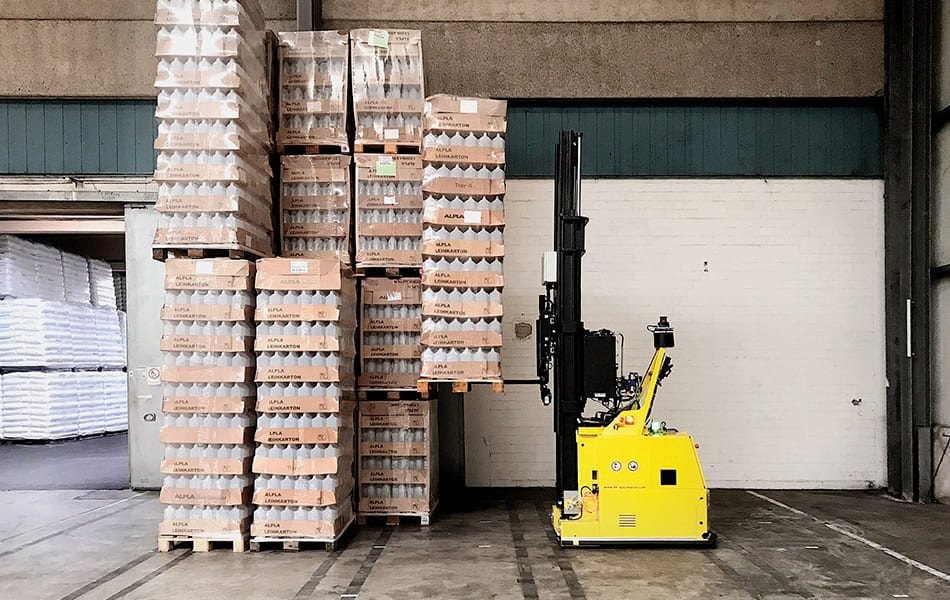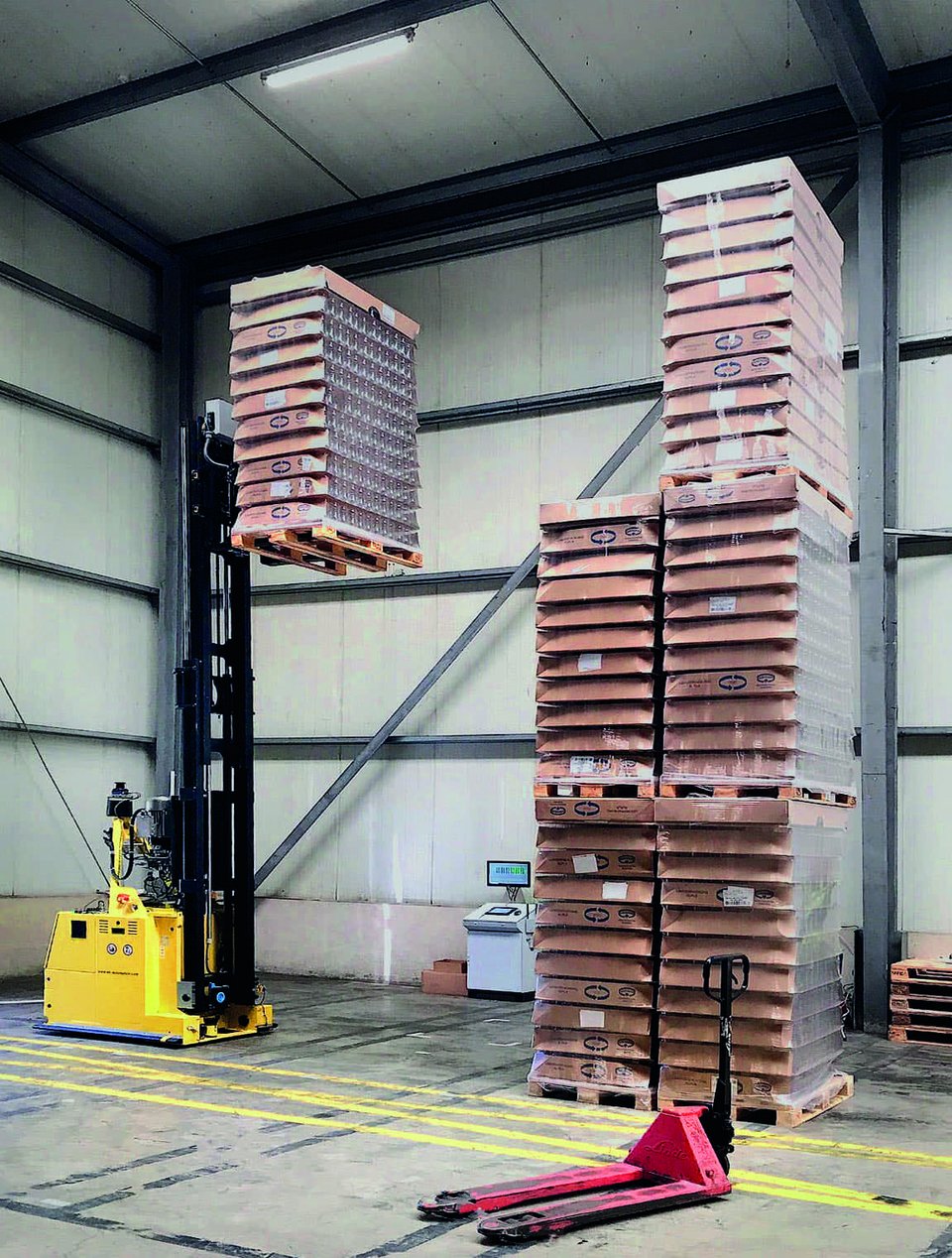Innovative technology identifies objects and reliably calculates outlines
Unstable products, such as PET bottles, canisters or tins stacked on pallets, make automated intra-logistics processes more difficult due, among other things, to inconsistent heights of the goods to be transferred. ek robotics has developed a solution for this that uses 3D camera technology. A 3D depth camera mounted on the autonomous transport robot (ATR) records the load to be transported records the distance to each individual pixel. The data is captured in a cloud of points and evaluated in real time by software developed by ek robotics. This enables the vehicle to recognise the exact type and position of the goods and pallet to be transported. Technical progress has gone so far that the robot can distinguish whether the identified upper edge of the load is packing the wrapping material or the load itself. With this knowledge the transport robot is able to pick up and safely transport even unstable goods of non-uniform height.
Successful test operation – significantly lower error rate than with manual control
In the joint EK/customer project, ek robotics successfully tested the use of 3D cameras and innovative software. The customer's requirement was for the process-reliable transport of empty PET containers by autonomous transport vehicles. The aim was to ensure that the unstable loads could be both stacked and unstacked without damaging them.
The results of the project are ground-breaking and impressive, particularly when the complexity of the task is taken into consideration. The transport robots succeeded convincingly in the practical test with highest precision and operational safety. Compared to manually controlled forklifts, the error rate and transport damage were significantly reduced. As a result of this successful pilot project and test operation, the innovative technology will soon be available to our customers.
![[Translate to Englisch:] [Translate to Englisch:]](/fileadmin/_processed_/1/3/csm_iStock-1274394138_Header_b80d0dec93.jpeg)

